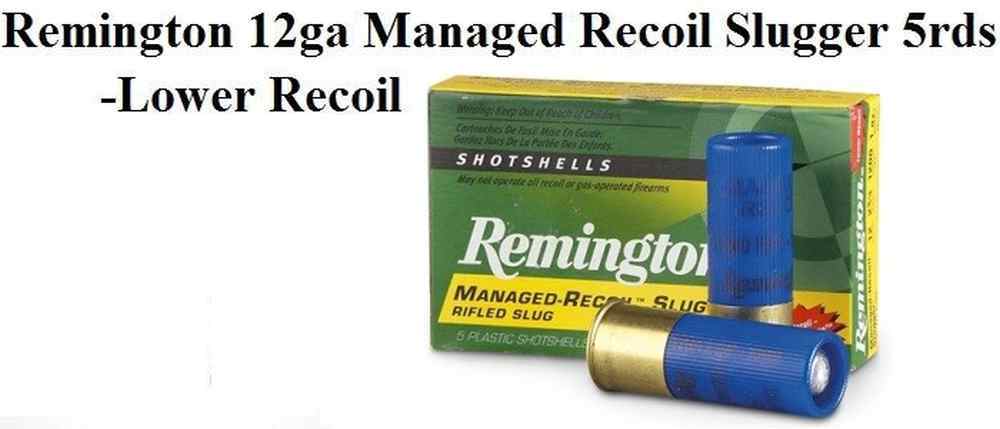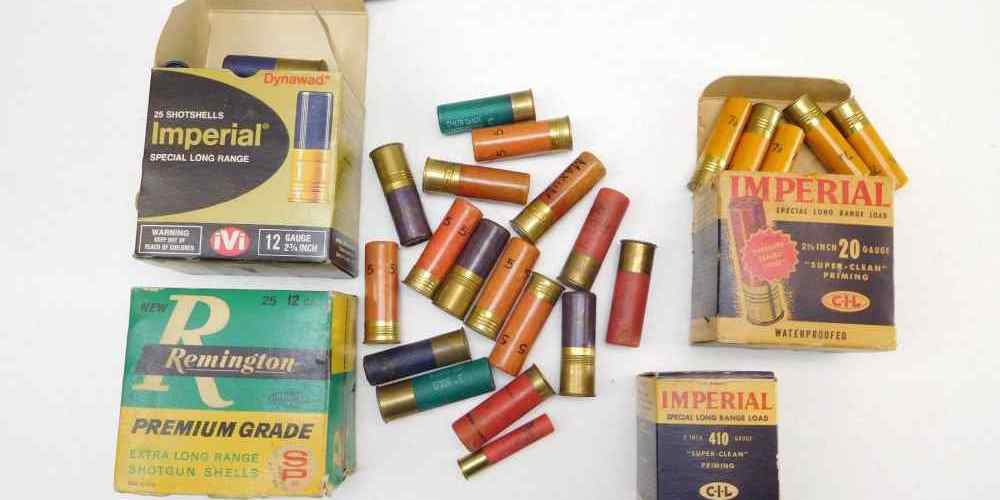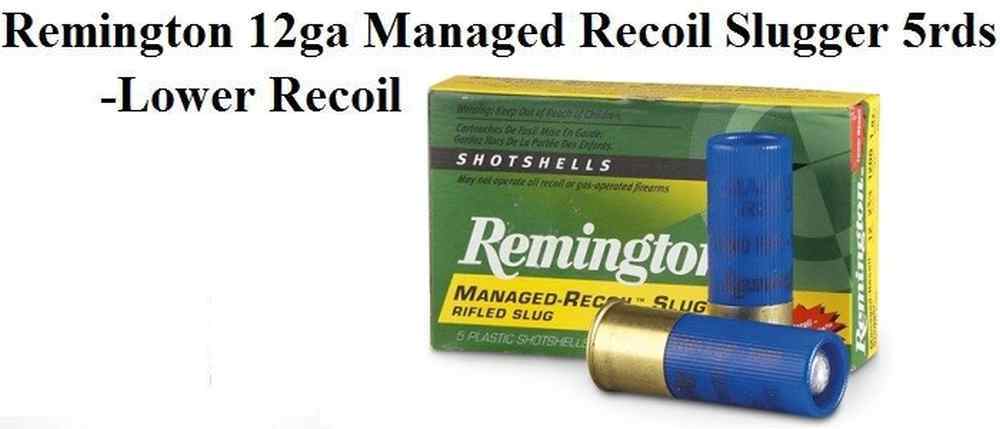Separating fact from fiction in the world of ammunition.
Debunking Common Shotgun Myths
Shotguns have long been a popular choice for hunters, sports shooters, and home defense enthusiasts. However, there are many myths and misconceptions surrounding the effectiveness of shotgun ammunition. In this article, we will debunk some of the most common myths and shed light on the truth about shotgun ammo.
One of the most prevalent myths about shotgun ammunition is that a shotgun blast will spread out in a wide cone, making it impossible to miss your target. While it is true that shotguns do have a spread pattern, the extent of the spread is often exaggerated. The spread pattern of a shotgun depends on a variety of factors, including the type of ammunition used, the choke of the barrel, and the distance to the target.
For example, birdshot ammunition will produce a wider spread pattern than buckshot or slugs. Additionally, a shotgun with a cylinder choke will have a wider spread than one with a full choke. At close range, the spread pattern of a shotgun may only be a few inches, making it crucial to aim carefully to ensure a hit on target.
Another common myth about shotgun ammunition is that birdshot is not effective for self-defense. Some people believe that birdshot is too small and lacks stopping power to incapacitate an attacker. While it is true that birdshot pellets are smaller than buckshot pellets, they can still be lethal at close range.
Birdshot ammunition is designed to be used for hunting small game, such as birds and rabbits. At close range, birdshot can penetrate skin and soft tissue, causing significant damage to an attacker. However, it is important to note that birdshot may not have the same stopping power as buckshot or slugs, so it is essential to consider the intended use of the shotgun when selecting ammunition.
On the other hand, some people believe that buckshot is the ultimate self-defense ammunition for shotguns. Buckshot consists of larger pellets that are designed to penetrate deeper and cause more damage than birdshot. While buckshot is indeed effective for self-defense, it is essential to consider the potential overpenetration of the pellets.
Buckshot pellets have the potential to penetrate walls and other barriers, posing a risk to bystanders in a home defense situation. For this reason, it is crucial to consider the layout of your home and the potential risks of overpenetration when selecting ammunition for self-defense.
In conclusion, there are many myths and misconceptions surrounding the effectiveness of shotgun ammunition. While shotguns are versatile and powerful firearms, it is essential to understand the capabilities and limitations of different types of ammunition. By debunking common myths and shedding light on the truth about shotgun ammo, shooters can make informed decisions when selecting ammunition for hunting, sports shooting, or self-defense.

Understanding Ammo Effectiveness
When it comes to firearms, there are a lot of myths and misconceptions that can cloud our understanding of what really matters. One area where this is particularly true is in the realm of ammunition effectiveness. With so many different types of ammo available on the market, it can be difficult to separate fact from fiction. In this article, we will take a closer look at some common myths surrounding shotgun ammo and explore the truth behind their effectiveness.
One of the most pervasive myths about shotgun ammo is that bigger is always better. While it is true that larger shot sizes can deliver more energy to the target, this does not necessarily translate to better performance. In fact, using too large of a shot size can actually reduce the number of pellets that hit the target, leading to a less effective shot. It is important to choose the right shot size for the type of game you are hunting, as well as the distance at which you will be shooting.
Another common myth is that all shotgun ammo is created equal. While it is true that most shotgun shells contain similar components, such as gunpowder and shot, the quality of these components can vary greatly from one brand to another. Cheaper ammo may not be as consistent in its performance, leading to less reliable results. It is worth investing in higher quality ammo to ensure that you are getting the best performance out of your shotgun.
Some shooters believe that using a choke on their shotgun will make up for poor ammo selection. While chokes can certainly help to tighten your shot pattern and improve accuracy, they cannot make up for using the wrong type of ammo. It is important to choose the right shot size and load for your shotgun, as well as the type of game you will be hunting. Using the wrong ammo can result in poor performance, regardless of how tight your choke may be.
Another myth that many shooters believe is that all shotgun ammo is lethal at close range. While it is true that shotguns are highly effective at close range, not all ammo is created equal. Some loads may not have enough energy to penetrate thick clothing or bone, leading to a less effective shot. It is important to choose the right type of ammo for the job, whether you are hunting game or defending yourself in a home defense situation.
In conclusion, there are many myths surrounding shotgun ammo that can cloud our understanding of its effectiveness. It is important to choose the right shot size, load, and brand of ammo for your shotgun to ensure that you are getting the best performance possible. By debunking these myths and understanding the truth behind shotgun ammo effectiveness, you can become a more informed and effective shooter.
Factors Affecting Shotgun Performance
Shotguns have long been a popular choice for hunters, sports shooters, and home defense enthusiasts. With their versatility and power, shotguns are a formidable tool in a variety of situations. However, there are many myths and misconceptions surrounding shotgun ammunition and its effectiveness. In this article, we will delve into the truth about shotgun ammo and how various factors can affect its performance.
One common myth about shotguns is that they are only effective at close range. While it is true that shotguns excel in close-quarters combat, they are also capable of delivering lethal force at longer distances. The key factor in determining the effective range of a shotgun is the type of ammunition being used. Buckshot, for example, is ideal for short-range engagements, while slugs can reach out to much greater distances with accuracy.
Another misconception is that shotguns have poor accuracy. While shotguns do have a wider spread than rifles or handguns, this does not necessarily mean they are inaccurate. In fact, shotguns can be quite precise when using the right ammunition and choke combination. By selecting the appropriate choke and load for the intended target and distance, shooters can achieve impressive accuracy with a shotgun.
One factor that greatly affects shotgun performance is the choke. Chokes are devices that attach to the end of the shotgun barrel and control the spread of the shot. Different chokes, such as cylinder, improved cylinder, modified, and full, offer varying degrees of constriction and can be used to tailor the shotgun’s pattern to the specific shooting situation. For example, a tighter choke may be used for longer-range shooting, while a more open choke is better suited for close-quarters combat.
The type of ammunition being used also plays a significant role in shotgun performance. There are a wide variety of shotgun loads available, including birdshot, buckshot, slugs, and specialty rounds. Each type of ammunition is designed for a specific purpose, whether it be hunting, self-defense, or target shooting. Understanding the characteristics of different shotgun loads and selecting the appropriate one for the task at hand is crucial for achieving optimal performance.
Shotgun barrel length is another factor that can impact performance. Generally speaking, longer barrels provide better accuracy and velocity, while shorter barrels are more maneuverable in tight spaces. The choice of barrel length should be based on the intended use of the shotgun. For example, a longer barrel may be preferred for hunting or clay shooting, while a shorter barrel is more practical for home defense.
In conclusion, there are many factors that can affect the performance of a shotgun, from the type of ammunition being used to the choke and barrel length. By understanding these factors and selecting the right combination for the task at hand, shooters can maximize the effectiveness of their shotgun. Dispelling myths and misconceptions about shotgun performance is essential for making informed decisions and achieving success in the field. So, the next time you hear someone say that shotguns are only effective at close range or lack accuracy, you can confidently set the record straight with the knowledge you have gained.
Choosing the Right Shotgun Ammo
Shotguns are a popular choice for many hunters and shooters due to their versatility and power. However, there are many myths and misconceptions surrounding shotgun ammunition that can make it difficult for shooters to choose the right ammo for their needs. In this article, we will debunk some of the most common myths about shotgun ammo and provide you with the information you need to make an informed decision.
One of the most common myths about shotgun ammo is that all shotgun shells are created equal. This is simply not true. There are many different types of shotgun shells available, each with its own unique characteristics and intended use. For example, birdshot is designed for hunting small game like birds and rabbits, while buckshot is better suited for self-defense or hunting larger game.
Another common myth is that more pellets in a shotgun shell equals more stopping power. While it is true that a shell with more pellets will create a denser pattern, the size and weight of the pellets are also important factors to consider. For example, a shell with larger, heavier pellets will have more stopping power than a shell with smaller, lighter pellets, even if they contain the same number of pellets.
Some shooters believe that using a shotgun with a longer barrel will increase the effectiveness of their ammo. While it is true that longer barrels can help improve accuracy and velocity, the length of the barrel will not have a significant impact on the effectiveness of the ammo itself. It is more important to choose the right type of ammo for your intended use than to focus on the length of your shotgun’s barrel.
Another common myth is that using a shotgun with a choke will make your shots more accurate. While chokes can help control the spread of your shot pattern, they will not necessarily make your shots more accurate. In fact, using too tight of a choke can actually decrease your accuracy, as it can cause your shot pattern to be too narrow. It is important to experiment with different chokes and ammo types to find the combination that works best for you.
One of the most persistent myths about shotgun ammo is that using a higher gauge shell will result in more power and stopping power. In reality, the gauge of a shotgun shell refers to the diameter of the barrel, not the power of the shell itself. A 12-gauge shell will not necessarily have more stopping power than a 20-gauge shell, as the power of the shell is determined by the type of shot and powder used, not the gauge of the shell.
In conclusion, there are many myths and misconceptions surrounding shotgun ammo that can make it difficult for shooters to choose the right ammo for their needs. By understanding the characteristics of different types of shotgun shells and experimenting with different combinations of chokes and ammo types, you can find the combination that works best for you. Remember, the key to choosing the right shotgun ammo is to focus on your intended use and choose the ammo that will best meet your needs.
Real-life Examples of Shotgun Effectiveness
Shotguns have long been a popular choice for home defense due to their reputation for stopping power and versatility. However, there are many myths and misconceptions surrounding the effectiveness of shotgun ammunition. In this article, we will explore some real-life examples of shotgun effectiveness to separate fact from fiction.
One common myth about shotguns is that they are only effective at close range. While it is true that shotguns are devastating at close distances, they can also be effective at longer ranges depending on the type of ammunition used. For example, slugs are solid projectiles that can travel much farther than buckshot or birdshot, making them a viable option for longer range engagements.
In a real-life scenario, a homeowner in a rural area used a shotgun loaded with slugs to defend against an intruder who was attempting to break into their home from a distance of 50 yards. The homeowner was able to stop the threat with a single well-placed shot, demonstrating the effectiveness of slugs at longer ranges.
Another myth surrounding shotguns is that they have excessive recoil, making them difficult to control. While shotguns do have more recoil than some other firearms, proper technique and training can help mitigate this issue. Additionally, there are recoil-reducing accessories available that can make shooting a shotgun more comfortable for those who are sensitive to recoil.
In a real-life example, a female homeowner used a shotgun loaded with reduced recoil buckshot to defend against multiple intruders who broke into her home. Despite the stressful situation, the homeowner was able to effectively neutralize the threat with minimal recoil-induced discomfort, showcasing the importance of proper training and ammunition selection.
One of the most persistent myths about shotguns is that they are indiscriminate and will cause excessive collateral damage. While it is true that shotguns have a wide spread pattern, proper shot placement and ammunition selection can help minimize the risk of unintended harm. For example, using birdshot or buckshot for home defense can help reduce the risk of overpenetration and collateral damage compared to using slugs.
In a real-life scenario, a homeowner used a shotgun loaded with birdshot to defend against an intruder who broke into their home while their family was present. The homeowner was able to stop the threat without causing harm to their loved ones, highlighting the importance of using the right ammunition for the situation.
In conclusion, shotguns are a versatile and effective tool for home defense when used properly. By dispelling common myths and understanding the capabilities of different types of shotgun ammunition, homeowners can make informed decisions about their self-defense options. Real-life examples demonstrate that shotguns can be effective at various ranges, manageable in terms of recoil, and capable of stopping threats without causing excessive collateral damage. With the right training and ammunition selection, shotguns can be a valuable asset in protecting oneself and loved ones from harm.





